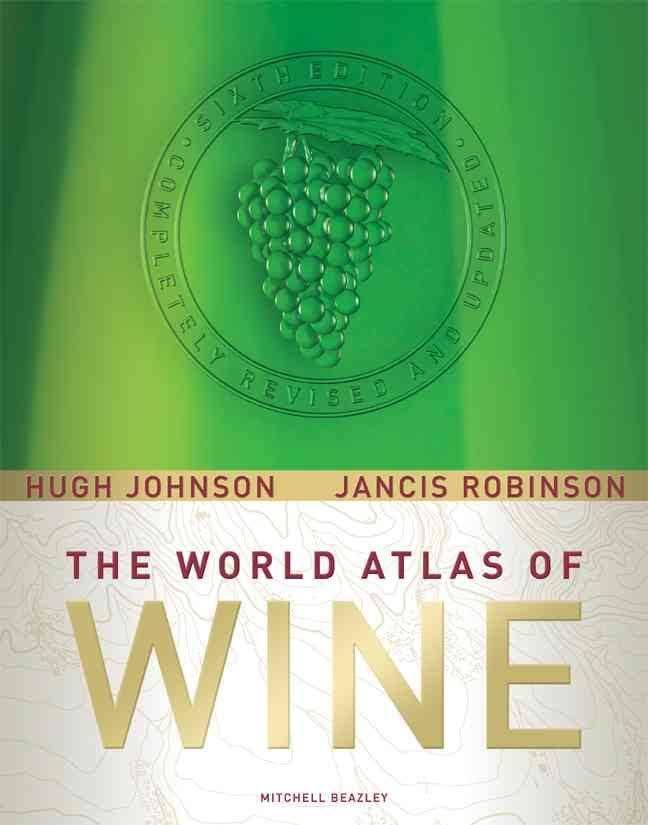8.4 /10 1 Votes8.4
4.4/5 Goodreads Language English ISBN 978-1-84533-689-9 Originally published 1971 Page count 400 Country United Kingdom | 4.7/5 Barnes & Noble 3.6/5 iTunes - Apple Pages 400 OCLC 213401236 Genre Atlas | |||||||||||||||||||||||||||||||||
 | ||||||||||||||||||||||||||||||||||
Publication date October 2013 (seventh edition) Similar Jancis Robinson books, Viticulture books, Cooking books | ||||||||||||||||||||||||||||||||||
The World Atlas of Wine by Hugh Johnson and (since 2003) Jancis Robinson, MW, is an atlas and reference work on the world of wine, published by Mitchell Beazley. It pioneered the use of wine-specific cartography to give wine a sense of place, and has since the first edition published in 1971 sold 4 million copies in 14 languages. Considered among the most significant wine publications to date, and it remains one of the most popular books on wine, with the most recent seventh edition published in October 2013.
Contents
Origin
Prior to its publication in 1971, no work of wine literature contained high quality, wine-specific cartography. Some single-subject wine literature contained simple line-drawn maps, but not detailed, colour cartography with precise boundaries, and no book attempting to cover the world of wine had maps for every country. It was therefore not possible to open a bottle, open a book, and see precisely where the wine came from. This sense of place for wine is taken for granted today, but in 1971 it was revolutionary, and Johnson’s timing was impeccable.
Until the World War II, wine was the preserve of the upper classes in western Europe, and virtually non-existent in the U.S. due to Prohibition, but servicemen returning home from the European theatre brought with them the newly acquired habit of wine drinking. With the emergence of mass tourism in the 1950s and the greater spending power of the 1960s, a whole new generation visited France, Italy and Spain, bringing back the continental culture of wine.
America's taste for wine also began to develop in the early 1960s. The majority of these new wine drinkers were young, well-traveled, and relatively affluent and, as the Baby Boom generation came of age, so the ranks of wine drinkers increased. Never before, and never since, have there been so many new wine consumers without any knowledge of the wines they were encountering, and in 1971 The World Atlas of Wine was uniquely placed to satisfy that demand. With mass tourism on the increase throughout the 1970s, the demand for The World Atlas of Wine continued to grow, as there was no real competition until 1988, when The Sotheby's World Wine Encyclopedia (now The Sotheby's Wine Encyclopedia) was published.
The Institut National des Appellations d'Origine, a French governmental organisation that avoids comment on commercial ventures, was moved to describe The World Atlas of Wine upon publication as "a major landmark in the literature of wine".
The distinctive maps for the First Edition of the Atlas were drawn by Fairey Surveys Ltd Cartographic office in Maidenhead, UK. Although many maps have been added in later editions many of the original maps of the classic wine areas are still used in the current edition.
iPad Edition
The seventh edition was simultaneously released as hardcover print book and ebook for the iPad using Apple's iBooks Author format (referred to as 'Made for iBooks' in iBooks). In December 2013 it was announced that the ebook was a finalist for a Digital Book Award. The ebook was also featured in the Best of 2013 promotion in iBooks.
